Durban, South Africa – Phumzile Nkosi often breaks into song when she takes visitors on a tour of the Phansi Museum. Or she will demonstrate Zulu ceremonial dances related to some of the artifacts and objects in the museum’s collection of southern African art.
Nkosi, the museum’s curator and manager, said the museum has had a profound impact on her, and not just because she has cleaned artifacts and cataloged metadata for all the works in the museum.
“Phansi restored the love of my culture,” Nkosi said, “because since I’ve been here, I’m feeling very proud to share the story behind our African collection.”
That story began humbly for Nkosi. In 1996, architect Paul Mikula, an avid collector of art, hired Nkosi to serve tea and do custodial work for the architecture practice he shared with several partners. Four years later, Mikula and Nkosi worked in collaboration to open the museum.
“We both are a unit,” Mikula said. “It’s still going now, years later.”
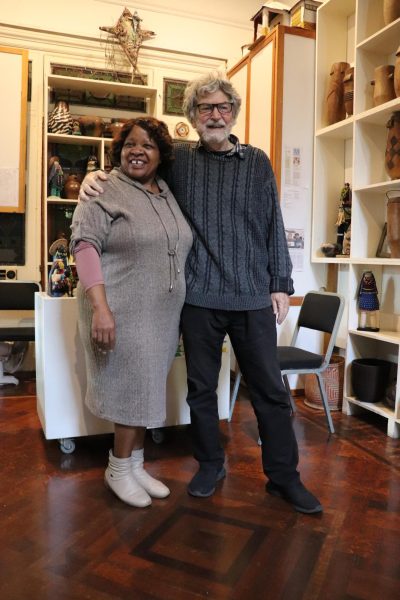
In her new role, Nkosi took on management and curatorial responsibilities.
“My contribution was my indigenous knowledge when it comes to the artifacts,” said Nkosi, who herself is a talented beadworker, a functional art form popular in Zulu culture.
The Phansi Museum, located in the Glenwood suburb of Durban, occupies three floors of the Esther Roberts House, a restored colonial era house named after Esther Roberts, one of the first woman cultural anthropologists in Durban in the early 20th century. The museum’s collection contains approximately 9,000 African artifacts from across southern Africa, and is spread over five gallery spaces in the house, from the basement to the first and second floors. Among the artifacts are life-size marionettes wearing traditional dress, woven baskets, pottery, fertility dolls, art from the Xhosa, Zulu and Ndebele communities, and beadwork.
Mikula and Nkosi said the museum’s name has more than one meaning. Phansi means “down” or “below” in isiZulu, referring to the basement, which houses items from the museum’s very first collections.
“But, it’s also the other Phansi, the forefathers. So this [idea] actually came from the forefathers. And you’ll know that if you don’t respect the forefathers, you can hit your head against it,” Mikula said jokingly, referring to the low entranceway leading to the basement.
Many of the items in the museum’s collection date back to the 1970s when Mikula developed a fascination with art and began collecting art from southern Africa.
“I love art,” Mikula said. “I’m an architect, but it’s the art, that thing that I think is the most beautiful thing.”
Many artifacts collected by Mikula and the museum staff were donated or acquired through connections Mikula makes with the people he encounters.
“You go out and you find people in the various areas who are guides,” Mikula said. “And so you start to get to know them.”
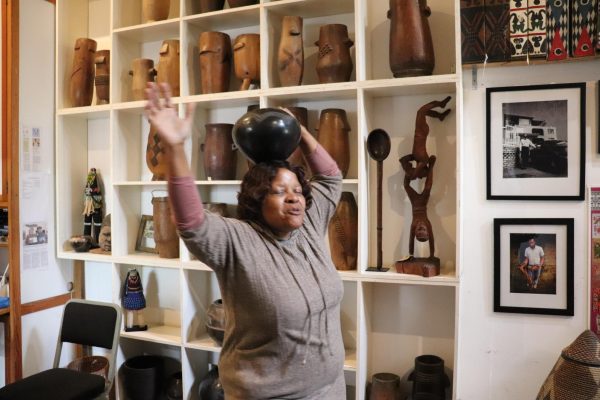
The Phansi Museum places a strong emphasis on the pre-colonial culture of South Africa and the artifacts created in the rural areas of the country, where some of these types of art are still made.
The museum has a collection of Zulu grass mats, or “Amacansi,” which Nkosi said are intricately woven mats that could be used for many different functions.
“[The Amacansi] are very special to us because we use them for seating,” Nkosi said. “We used them for sleeping before mattresses and to bury their loved ones. So we were using grass mats to wrap them and bury them in peace. Grass is very important to us.”
The museum also contains a variety of instruments, including drums and shakers filled with beads or seeds. When taking guests through the exhibit one day in late June, Nkosi played an accordion and explained the importance of singing and dancing in Zulu cultural traditions.
“When it comes to singing and dancing, talk to us. We are very good at composing our own songs,” said Nkosi, explaining that songs allowed people to relay family problems they weren’t supposed to tell others directly about. Maybe they were low on food or their husband had gone off.
“I will wait, I will wait till he comes back,” Nkosi sang, moving in a circle and lifting one knee toward her chest.
Other artifacts in the museum include intricately beaded wire and clay pots, hand-carved fertility dolls and a wooden funeral boat from northern Mozambique crafted in the shape of a fish. Nkosi removed the fish’s head to show visitors cow skin lining the inside. While the boat is usually sealed once the body of the deceased is placed inside, this particular boat was never used.
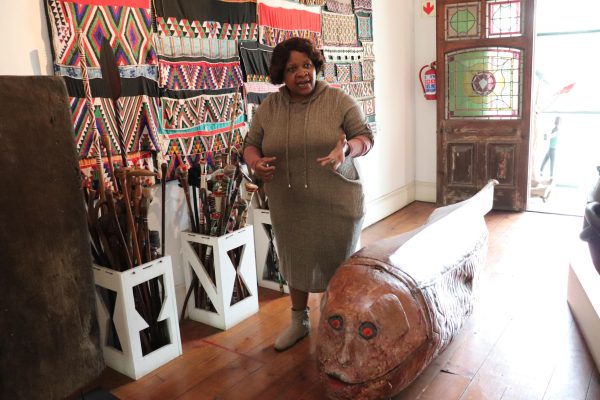
Mikula said now that he is 84 years old and ill, he has to think of a succession plan for the Phansi Museum.
“We are trying to find somebody to take it over,” Mikula said. “I’ve got cancer and all that sort of stuff, so I won’t be around too much longer.”
Mikula said he is hopeful a nearby university will take over the museum, and discussions are taking place for that to happen.
“We are actually very excited about that because it means they’re going to start another campus here, and so their students can work with this stuff,” Mikula said.
Nkosi said whatever happens, she would like to keep guiding visitors through the museum and telling them the stories behind the artifacts.
“I really enjoy taking people around in the museum,” Nkosi said, “and my hope is to see the museum growing, flourishing and doing more than this.”













































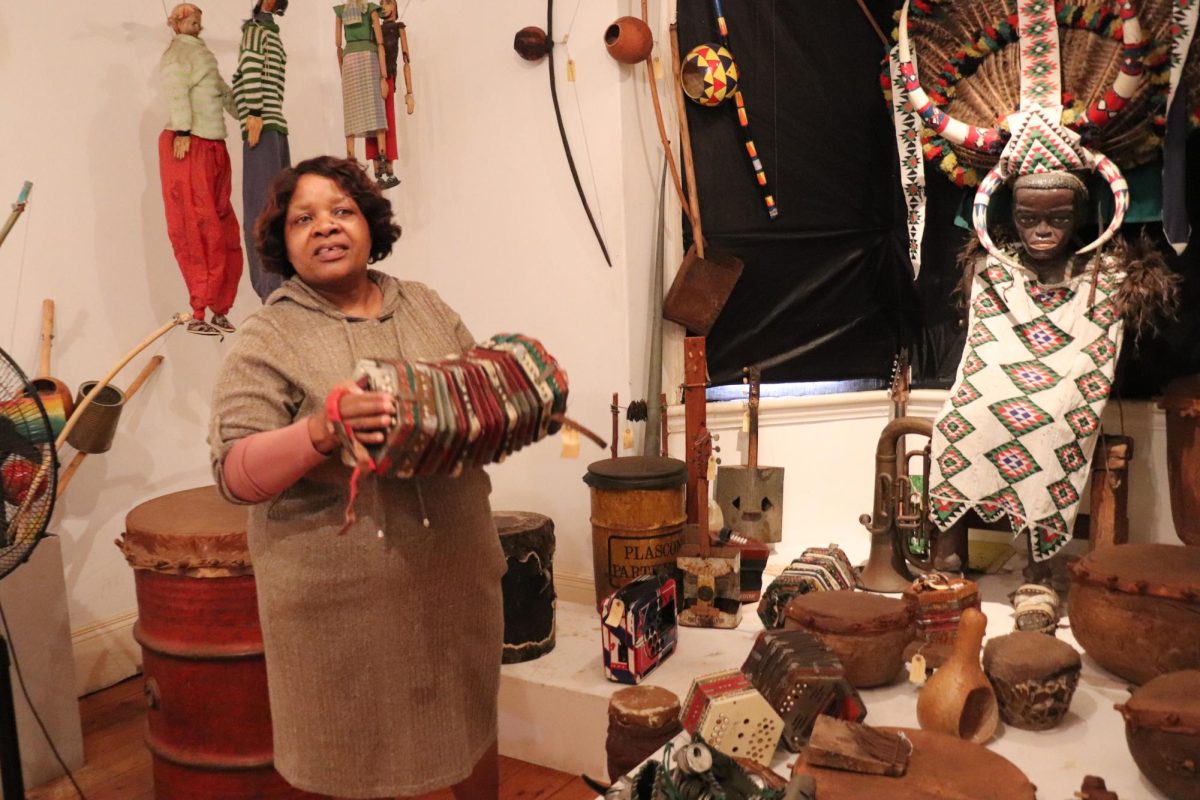
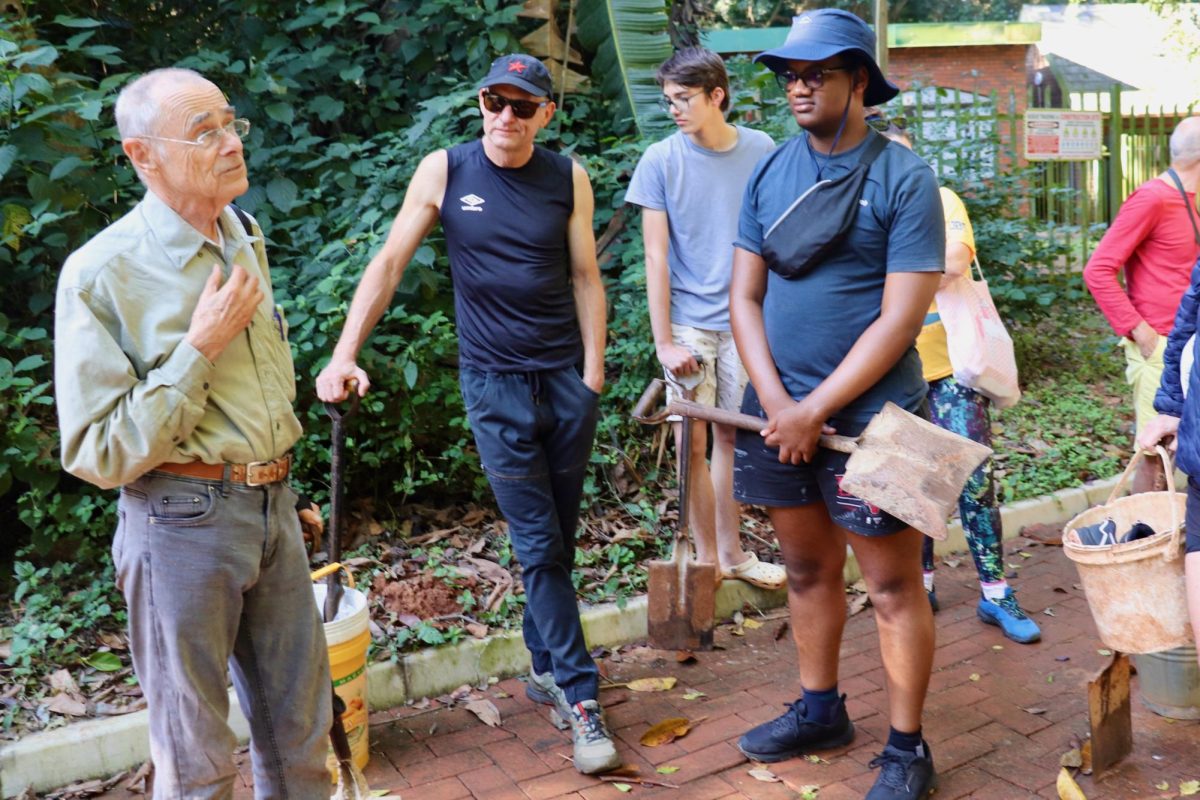

Paul Townsend • Aug 19, 2024 at 8:26 pm
That is truly a wonderful story. Saving history is necessary and that is what they are doing every day. Well done!
Mary Grossman • Aug 18, 2024 at 8:24 am
Fascinating article and well written!